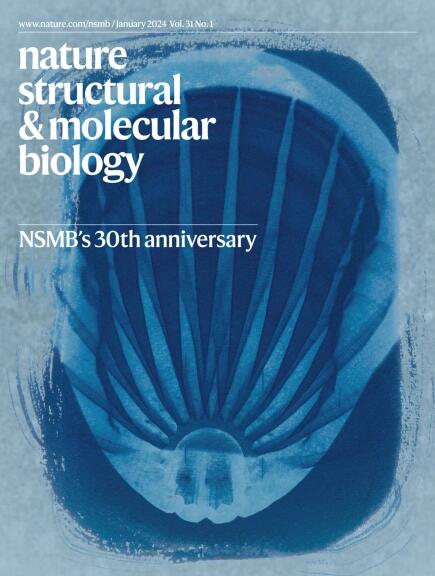A competitive regulatory mechanism of the Chd1 remodeler is integral to distorting nucleosomal DNA
IF 10.1
1区 生物学
Q1 BIOCHEMISTRY & MOLECULAR BIOLOGY
引用次数: 0
Abstract
The Chd1 chromatin remodeler repositions nucleosomes into evenly spaced arrays, a characteristic of most eukaryotic genes. Here we show that the yeast Chd1 remodeler requires two activating segments to distort nucleosomal DNA into an A-form-like conformation, a critical first step in nucleosome sliding. As shown by cryo-electron microscopy, these two activating segments together pack against the ATPase motor, where they are poised to stabilize the central ATPase cleft. These activating elements contact the ATPase at locations that are incompatible with binding of NegC, an autoinhibitory segment located between the two activators. NegC inhibits sliding by antagonizing the activators through steric competition and constraining activator placement, giving rise to directional nucleosome sliding. Given that activator reinforcement of the ATPase cleft is needed for DNA distortion, this first step in remodeling appears to provide a natural checkpoint for regulation of chromatin remodeler activity. Nodelman, Folkwein et al. define a regulatory region in Chd1 containing adjacent inhibitor and activator elements that compete for binding to the remodeler ATPase. The competition between these elements shows how remodeler regulation is integrated into the nucleosome sliding cycle.


Chd1重塑器的竞争性调控机制是扭曲核小体DNA的组成部分
Chd1染色质重塑器将核小体重新排列成均匀间隔的阵列,这是大多数真核生物基因的特征。在这里,我们发现酵母Chd1重塑器需要两个激活片段将核小体DNA扭曲成a型构象,这是核小体滑动的关键第一步。正如低温电子显微镜所示,这两个激活片段一起聚集在atp酶马达上,在那里它们准备稳定中心的atp酶间隙。这些激活元件在与位于两个激活因子之间的自抑制片段NegC结合不相容的位置与atp酶接触。NegC通过空间竞争和限制激活剂的位置拮抗激活剂来抑制滑动,从而引起核小体的定向滑动。鉴于DNA扭曲需要atp酶裂缝的激活剂增强,重塑的第一步似乎为染色质重塑活性的调节提供了一个天然的检查点。
本文章由计算机程序翻译,如有差异,请以英文原文为准。
求助全文
约1分钟内获得全文
求助全文
来源期刊

Nature Structural & Molecular Biology
BIOCHEMISTRY & MOLECULAR BIOLOGY-BIOPHYSICS
CiteScore
22.00
自引率
1.80%
发文量
160
审稿时长
3-8 weeks
期刊介绍:
Nature Structural & Molecular Biology is a comprehensive platform that combines structural and molecular research. Our journal focuses on exploring the functional and mechanistic aspects of biological processes, emphasizing how molecular components collaborate to achieve a particular function. While structural data can shed light on these insights, our publication does not require them as a prerequisite.
 求助内容:
求助内容: 应助结果提醒方式:
应助结果提醒方式:


